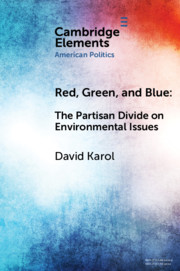Element contents
Red, Green, and Blue
Published online by Cambridge University Press: 29 April 2019
Summary
- Type
- Element
- Information
- Series: Elements in American PoliticsOnline ISBN: 9781108673266Publisher: Cambridge University PressPrint publication: 25 April 2019
References
- 33
- Cited by

